|
This post can help parents and teachers teach children and teens who have disabilities to develop their writing, with a Christian worldview. For all of us, isn’t a major part of life, learning how to adapt? We often need to consider alternative solutions and “workarounds.” It may encourage students with disabilities and their siblings or classmates to see how many of us do this as a normal part of life. Those with disabilities may need extra consideration of how they can succeed with learning to write, but all students can benefit from aspects of these alternatives as well. Three Tips for Positive Writing Experiences 1. If they are able, have them learn to write positive affirmations on index cards to put about the house. Let them participate in where to put them…Such as taped to a mirror, on the fridge, in a backpack, etc. Since writing often involves sharing, this is an early part of learning to share. Include affirmations that are promises from the Lord such as Psalm 31:24 – Be of good courage and He shall strengthen your heart, all you who hope in the LORD. Psalm 84:12 Oh, LORD of hosts, blessed is the one who trusts in you! Psalm 121:2 My help comes from the LORD, who made heaven and earth. 2. If your students can’t write all of that yet, then let them write parts of it or color parts of it. Or paraphrase verses into positive cheers such as, Jesus loves me! Or Be brave! God will strengthen me! Trust God! Some children are “concrete” learners who take many things very literally. You may need to choose your positive affirmations with this in mind. For instance, Prayer is talking to God. He will always listen and care. 3. Help them memorize your positive affirmations. A fun way can be for them to take turns covering up a word, and then everyone tries to say the words together and guess what was covered up as well. Or let them decide what volume each time you say the verse, and if it’s loud, encourage it to be joyful, praise loud. Young writers can enjoy using puppets to repeat their phrases. Puppets can be a great and fun motivator. Here’s a link to a nice pack of finger puppets on Amazon. Click HERE. Once memorized, think of the joy your children can have repeating these phrases throughout their days…and even at bedtime. Once memorized, they can “own” these phrases and certainly know them “by heart.” Help Your Children Embrace God’s Love Even Toward Their Disability One of the most prolific hymn writers in US history, Fanny Crosby (1820-1915), was blind since early infancy. She is known for hymns such as “To God be the Glory,” “Blessed Assurance,” “I am Thine, O Lord,” and more than 5,000 other hymns. When she was young, her family, especially her grandmother, helped her memorize many parts of the Bible, which greatly influenced her beautiful, rich hymn writing. In some ways her blindness was more like a gift, by how it shaped her life. She was known for saying she wished she had been born blind, so in heaven, the first face she would ever see would be Jesus’s. What disabilities or extra challenges do we each have, that if closely examined have elements of gifts from God? My husband used to say his daughter Rachel, with Down Syndrome, usually didn’t have a care in the world, and she could enjoy that family would always take care of her. Joni Eareckson Tada, famous author and Christian radio host, and founder of Joni and Friends, a world renowned mission that provides wheelchairs to the disabled and gives Christian hope to those they serve, writes in her book, The Practice of the Presence of Jesus: Daily Meditations on the Nearness of Our Savior, that because she is a paraplegic she has been able to go through life‘s journeys slowly, and as a result, really notice God, in precious, intricate and big ways. The implication is if she lived a very hurried life, which so many of us do, she thinks she would have missed much of the joys that she has been able to have. For the family--Joni’s beautiful book, Timeless Hymns for Family Worship, includes beautiful, inspirational passages in which Joni writes to young readers… and she shares with them her sweet paintings which she created with brushes in her mouth. You may also be interested in the picture book for children ages 4-7 that’s about Joni--Joni Eareckson Tada: The Girl Who Learned to Follow God in a Wheelchair (An Inspirational Children’s Christian Biography About Trusting God and Loving Others) More Ways to Nurture Their Writing 1. All children need time to write creatively, and depending upon their developmental level, it can look very different. That’s okay. Just be sure to give them that opportunity. Our Rachel who is now in heaven, wrote in the simplest way but loved to do it. It would often look like gibberish, but she would put her heart and soul into it. She learned to write her first name. When this dear girl was grade school age, I tried to teach her how to put the silverware back in their individual sections in the silverware drawer. That turned out to be beyond her abilities, and so we let it go. She would need help with tying her shoes and things like that. She only lived to be 35, but what I’m about to say is quite powerful… In her later years, she would emphatically write circles with X’s inside. She would write this line upon line across the entire page, and then want to do it again. It didn’t seem that she understood what she was doing. Years later, we see it was a message from God. What are X’s & O’s? Kisses and hugs. Please, let your children “free write” in any fashion they are guided to do. Also, remember that this helps build the fine motor skills that are so important for many tasks in addition to writing. Even X’s and O’s are hard to write. 2. It’s exciting now that children can audio record and see their words in writing appear, print them out, and read them aloud. You might find ways like this to adapt to your child’s level of development. 3. Solutions can be creative and “tailor-made” to the needs of your students. One student with brain damage communicates partly with sign language. His mom helps him build on this success by first signing a word and then together they find the letters using the Scrabble board game. Once they organize the letters to form the word, he writes it. “Necessity is the mother of invention.” Presently I wear a rigid sling on my right arm mostly 24/7 for post rotator cuff surgery and will do so for six weeks. Since I am right-handed, I need to find ways to do things differently. Sometimes I discover better ways. I will give a small example. I make homemade yogurt. Normally, when I add the starter from a glass jar into the pot, I use a rubber spatula to get the remaining parts that cling inside the glass. When I could no longer do this, because of wearing my sling, it quickly dawned on me to just add a little water in the jar, close it up, and shake it. Voilà! It all poured out so nicely. Even when I am done with my sling, I think I will do it that way. Who needs to get the spatula and have one more thing to wash! Perhaps this visual picture can inspire you to also remember that God has blessed each and every one of your children, and he will help you find creative ways to do things differently. They may even be better than how the rest of us tend to do things… or think things, or love things! May your children pour their hearts and dreams into their writing in new and refreshing ways. Considerations 1. Is it a new challenge? Then allow for some extra time in the learning curve. Keep encouraging and noticing small but important steps forward. 2. Foster a CAN-DO spirit. It may be slower, it may need to be intentionally different, it may be going against long-valued traditional methods.… But with joy and trusting in Christ, embrace working within and working around your goals and be ready to adjust them to help your child acquire skills and confidence with writing. By the way, When Joni Eareckson Tada was a teenager, she became a paraplegic from a tragic diving accident in the Chesapeake Bay. During her rehabilitation, she prayed to God, that if He was not going to take her, to please show her how to live. Throughout her near 75 years of life, she has had an outstanding can-do spirit and inspires people throughout the world, on the radio, with singing, books, but especially for ministry. From her wheelchair, God showed her how to help those who are disabled. With His Grace, they created the ministry, Joniandfriends.org. 3. Give them lots of enrichment (for instance field trips, conversations, hands-on crafts, projects, science experiments, books, and movies) so they can adapt their own personal learning styles to subjects you are teaching, which you want them to write about. I pray you are pleasantly surprised to see how these experiences trickle into their learning and writing. 4. Let them take the lead on some of the decision making, so they have a sense of ownership with each writing project. 5. Be ready to give them some structure, so they do not feel overwhelmed. For instance, maybe they want a comic template, where they can write comments in the bubbles, or a graphic organizer, where they have some blanks to fill in to complete the story. A parent who homeschools her teenage son who has autism and speech, language, and attention challenges, does a wonderful job of presenting a concrete topic by showing a picture. Then she facilitates his writing by asking one question at a time, such as, What do you see? After her son answers each question, he is encouraged to write his answer as a full sentence. This life skill of learning how to describe things carries into important communication skills for other things that can be key for survival and well-being. Being able to express oneself helps build confidence, too. Whether your children are writing about a project, science experiment, Bible story, or any other writing with a time frame, they may need sequencing structure to help them identify what happened first, next, and last. Connecting these dots can help build comprehension and awareness of cause and effect and other important brain development. 6. Keep telling your children, you are SO PROUD of them, and Jesus is too. When they feel this kind of love, they can learn to be unstoppable for the paths God sets them on. Dear reader, may you and your loved ones be blessed by this message, Heidi Vertrees Author/Educator Victor Survives Being a Kid newSongpress.net Copyright 2024, newSong Press Copies are permitted for teaching purposes.
10 Comments
By Zachary Hamby (Editor’s Note—Zachary Hamby is the author of The Hero’s Guidebook: Creating Your Own Hero’s Journey, as well as Hero Tales from World Mythology: Teaching World Mythology Through Reader’s Theater Script-Stories; Reaching Valhalla: Tales and Sagas from Norse Mythology; Pilgrim’s Progress: A Reader’s Theater Script-Story; John Milton’s Paradis Lost: A Reader’s Theater Script-Story; and numerous other publications such as those on Robin Hood and Tales and Legends of King Arthur. Zachary Hamby and his wife, Rachel M. Hamby, are indeed creative English teachers. Their products can be seen on creativeenglishteacher.com.) Be sure to see end of post for extra helpful information.... Two of the greatest storytellers of all time, J.R.R. Tolkien, author of The Hobbit and The Lord of the Rings, and C.S. Lewis, author of The Chronicles of Narnia, said that stories have a special power—a healing power. It’s easy to get caught up in the struggles of everyday life. As our problems pile up, we forget that there is hope and help available to us. Yet when we enter the imaginary world of a story, it’s like we are healed of a sickness. The hero’s courage inspires our own; the hero’s problem of saving the whole world (or at least part of it) makes our real-life problems seem smaller. We remember to hope. Coming back from the story world, we can see the real world in a new, inspired way. Lewis said that in imaginary stories “we do not retreat from reality; we rediscover it.” It’s no coincidence that the common message in a lot of hero stories is having hope in even the darkest of times. In stories, obstacles are never as impossible as they seem. All giants can fall, and all dragons have a weak spot. If that theme of hope can spill over into real life, it can change everything. These are some of the reasons why human beings respond to stories, but what about the urge within us to write those stories? Tolkien had a theory about that, too: We have a desire to create because we are created beings. To truncate a line from his famous essay “On Fairy Stories,” he says, “We make because we are made in the image and likeness of a Maker.” The very act of creating is a way of emulating our Maker. Tolkien calls this process Sub-creation. This process is not limited to writing, of course. As writers, singers, painters, speakers, we become sub-creators, nowhere near as mighty and talented as God, but using the abilities He gave us to participate in the act of creation. As we create, we do so in praise of our Creator. It’s a beautiful idea, and one that I see as a solution to much of the malaise we find in the world today. Modern people are trained to be consumers, not creators. We listen to songs we do not sing. We view pictures we did not paint. We read words we did not pen. Since the act of creating helps us better understand God, if we do not create, there is a hole in our understanding. As Haggai 1:6 says, “You eat but are not satisfied. You drink but are still thirsty.” (NLT) Our culture is always consuming, but never full. While I believe there are also many practical forms that this creative desire can take: cultivating a garden, building a structure, restoring an old vehicle, cooking a delicious meal, Tolkien’s specific emphasis was on writers who create their own hero stories. Some people have this desire, but they honestly do not know where to begin. How do you tell an entire story? Way back in the fifth grade I was given the opportunity to write a story—any kind of story I wanted—and submit it for a contest. So, naturally, I chose to write a hero story. It was an eight-page epic about a boy who lives in a kingdom that has a gigantic wall all the way around it. Nobody in the kingdom has ever heard of magic or seen magical creatures. They have never thought about there being a wider world beyond their kingdom. Yet one day this boy, who just so happens to live in an orphanage, is visited by a strange, pointy-eared man who tells him the shocking truth: There is a whole world beyond the wall—a world filled with magic and magical creatures—and even more startling: It is the boy’s destiny to journey there! As it turns out, the orphaned boy is actually the son of the King of the Elves, whose own kingdom is in mortal danger. To make a short story even shorter, the boy goes through the wall, leaves the kingdom, and finds adventure. Along the way there are wolves and dragons to fight and princesses to rescue, and it all ends up nicely—and quickly. It was only eight pages long after all. I’m not mentioning this because I think that it is a great story. (It really isn’t.) I’m mentioning it because the story I wrote actually fit the ancient storytelling pattern called the Hero’s Journey, which is found in hero stories from all across the world. Turns out, I had accidentally followed a pattern that is thousands of years old. All I knew is that I liked hero stories and wanted to write one. Since I had read other hero stories like The Hobbit and The Lord of the Rings, I had subconsciously followed the pattern of those stories. My hero began in an ordinary place, discovered that he had a secret destiny, took advice from a wise mentor, followed the path to adventure, and eventually saved the day. And what was the title of that masterpiece that I wrote? The Journey. This writing experience in my own life led me to write The Hero’s Guidebook. Rather than accidentally discovering this pattern, I wanted young writers to be fully aware of it—and use it intentionally. In the book, I outline the various stages in the Hero’s Journey, and to illustrate them, I use examples from famous books, movies, and video games. I give readers practical tips for using the Hero’s Journey to begin telling their own stories. This does not mean they need to follow this pattern. They are perfectly welcome to blaze their own trail. But examining this structure will show them the basics of how stories are told—and give them basic inspiration for creating their own. The Hero’s Guidebook also reinforces the idea that life is a journey. While the book is not overtly religious, readers can easily apply the stages to their Christian walk. I believe God has us all on an adventure. He sends us a Call to Adventure, which we are sometimes reluctant to accept. And while He is always with us, this does not always mean smooth sailing. Like the great heroes, we must go through the Valley of the Shadow of Death, but if we remain faithful and true, we will emerge victorious on the other side. Encourage your students to start their own journey today—to be a creator in the image of the ultimate Creator! Additional Helpful Links
 About the Author For the last nineteen years Zachary Hamby has been a high-school English teacher in rural Missouri. Teaching in a high-poverty area, he believes in the power of education to enrich and improve his students' lives. In 2020 Zachary was a finalist for Missouri Teacher of the Year. Zachary is also the author of a variety of textbooks, including The Hero's Guidebook. He maintains the website www.creativeenglishteacher.com, which features innovative classroom resources and a blog with creative teaching ideas. Zachary currently teaches high school English in the Ozarks, where he resides with his wife and two children. May your time with your children be blessed, Copyright 2024, newSong Press
Gardening can be a great way to involve children and teens with research skills, reading, and writing. The joy of their labor as they see the plants grow and become beautiful can also help them appreciate God’s marvelous creation. I encourage you to have a vegetable garden. Children can have pride and joy with planting and caring for their plants. Gardening teaches them how to be responsible for living things and how to bless their family. Children also can be so excited to help harvest and carry produce into the kitchen for the family to share together. When there is extra produce, children can learn to give their bounty to neighbors and perhaps those in need. Some children learn best by what we call kinesthetic experience. Personally, I think we all learn best by doing. If you are homeschooling, isn’t it lovely to expand your homeschool into your backyard if possible and enrich your children with hands-on learning in the garden? Children also can delight in “discovery learning,” when they acquire knowledge that you want them to have, but by finding it on their own. Perhaps you have used methods of discovery learning with your teaching. Sometimes children are more likely to “own” the knowledge if they have had the thrill…shall we say of unearthing it first. Gardening can be a great way to do this. Easy Peasy or maybe Easy Beansy 😊 If you live in an apartment or condo, you may have space on a balcony for growing potted plants, or you might like to grow vegetables and flowers in a community garden. When my children were very young, we had a community garden plot where we only grew bush beans. They were so easy and on a hot summer day it was great fun to go there while the children sprayed the plants and definitely themselves with the hose. Gardening is work, but by all means, I pray you savor ways to make it FUN as well. If you are new to vegetable gardening, here are some helpful tips-- Keep it simple in the beginning... ◦ Raised beds are nice, but you don’t have to start with them. Keep it simple. Create a patch of land or even a "grow bag" that you know has full sun and good access to water. A watering can can do the trick. ◦ Perhaps choose half a dozen or so favorite vegetables to grow that do well in your area. Avoid having too many of each. Remember, you are aiming for success. This approach can protect you from getting overwhelmed. ◦ Most of our garden is planted from seeds which we obtain from catalogs and online such as https://www.superseeds.com. However, you might prefer to buy seeds or starter plants at your local nursery or nearby general stores. After planting seeds, keep the soil moist to aid in sprouting and growth. ◦ With starter plants, you can cut slits in large leaf bags for where you will place your plants. Then spread this liner on the patch so it can block weeds from growing up around your plants. If starter plants are planted on a sunny day, cover them with newspaper to avoid wilting. Repeat the next day if needed. ◦ When the seeds sprout, teach your children to gently water them from the watering can so the stems do not break. Frequent watering is important at this stage of early growth since the roots are still short and can dry out quickly. Kids’ Gardening Journals ◦ Your children can enjoy keeping gardening journals that have pages for drawings as well. If you do this digitally, they may also like to add photos of the different stages of the plants’ growth. ◦ Their journals can include their observations as well as their feelings about their experience. Plus, by dating each entry, they can later remind themselves of growth stages to help with planning a garden for future seasons too. ◦ In their journals, they should sketch maps of where plants will grow. This can take them on a research journey to learn which plants may grow better next to each other and of course, to learn how big they become so they understand the need for spacing the plants. They can research which plants grow well in your area, as well as the best time to plant the ones you are choosing. ◦ They can also investigate how best to take care of the plants as they grow. Do they need stakes? (Think, stick with twine.) Do they attract pests like potato beetles? (Those can be removed by hand and also treated with natural, safe sprays.) ◦ Strawberry and rhubarb plants come back each year, and garlic cloves are planted from a good garlic bulb in the fall. That’s the kind of information children can have fun discovering on their own as they do their research. ◦ Their journals also can include their favorite recipes in which they use their garden produce. Learning how to organize and write recipes is a good writing skill too. ◦ Some children will want to create stories and poems or essays from what they observe in the garden. Kids' Lit Your literature at this time can include garden and farm themes--
Turn to God, the Divine Gardener ◦ As a family, you may want to make it a practice to teach your children to pray for their garden--to grow under God’s protection, and also to thank God when they notice the beautiful growth and harvest of their plants. When gardening we are often on our knees--a great way to pray. ◦ You can teach your children about the fruit of the spirit and how we want to plant love, joy, peace, patience, kindness, goodness, faithfulness, gentleness, and self-control in the garden of our lives, and pray that these virtues will grow. Galatians 5:22-23 “But the fruit of the spirit is love, joy, peace, patience, kindness, goodness, faithfulness, gentleness, self-control…” ◦ The Bible has many beautiful gardening references. Once again, your children might like to research these and memorize parts. For as the earth bringeth forth her bud, and as the garden causeth the things that are sown in it to spring forth; so the Lord GOD will cause righteousness and praise to spring forth before all the nations. (Isaiah 61:11) The Restoration of THE GARDEN Means So Much... In Genesis 2: 8-9 and Genesis 3:8 we read of the beautiful first garden God created. Then there was the fall and people could not re-enter that garden. Death came too. So, I am so excited to read in John 19:41 Jesus rose from the dead IN A GARDEN. God does everything perfectly! Of course, a garden, because Jesus turned everything around and made it right. Now, as His followers we have access to God’s heavenly Garden, Paradise. Jesus is the resurrection and the life. At the place where Jesus was crucified, there was a garden, and in the garden a new tomb, in which no one had ever been laid. (John 19:41) NIV Psalm 92:12-14 and Proverbs 28:19a have agricultural themes. I am passionate about Jesus’ words in John 15:5 and hope many children memorize it-- “I am the Vine; you are the branches. Whoever abides in Me and I in him, he it is that bears much fruit, for apart from Me you can do nothing.” (ESV) May you and your dear gardeners enjoy a bountiful harvest in your gardens and in your lives. Galatians 6:9 “Let us not become weary in doing good, for at the proper time we will reap a harvest if we do not give up.” (NIV) Happy gardening! Heidi Vertrees Author of Victor Survives Being a Kid newSongpress.net Like to see more blog posts like this? Click on the image below or HERE and scroll down the homepage to receive periodic newsletters. Copyright 2024, newSong Press. Copies are permitted for teaching purposes.
Teaching children and teens how to wear the Armor of God, as taught by Apostle Paul in his letter to the Ephesians, can empower and inspire them even in their writing. The ideas in this Armor of God post can be used in homeschool co-ops, Christian school classes, Christian youth groups, and Sunday schools. An object lesson, writing prompt, and links to two video clips for song and motivation are included, along with other writing suggestions, flagged by Writing for Students. Paul was in prison when he wrote about the Armor of God. He had suffered many confrontations and attacks throughout his ministry, that would make anyone want armor at least as good as the Romans wore back then. But what did Paul emphasize by wearing the Armor of God? STAND FIRM! How? IN GOD’S STRENGTH In fact, this is what all Christians are to do when facing all kinds of evil including spiritual darkness. Boldness is overcoming fear and being courageous to do what is right. So, let’s check out this royal armor…from Ephesians chapter six. 1. The Belt of Truth Each Roman soldier wore a strong, wide belt for protection and to hold armor in place, including a sword. When we make sure our belt of truth is on tightly, we are saying we believe God’s truth never changes and we TRUST God. We are surrounding our very core with the assurance of God’s almighty power. Writing for Students Every day that students study God’s Holy Word, they can become strengthened by learning who God is, what He has done, and what He promises to do. Students can be challenged to reflect daily on what they learn. Students can be encouraged to keep a journal of God’s truths to help them think about and remember them throughout their days. They can practice praying these promises when they talk to God, by thanking Him for each one. Promises to Boost Your Days-- You are wonderfully made by God. God knows everything and is everywhere. God is powerful, loving, and good. If you believe on Jesus, God is always with you, and NOTHING separates you from God’s love. He has plans for you to do good works. In God’s eyes, you always matter. 2. The Breastplate of Righteousness I’ve never donned a bullet-proof vest, but I can imagine what hope for protection it must give the wearer, especially for one’s heart. As Christians, when we put on the breastplate of righteousness, we are declaring our faith that Jesus died for all our sins, He rose again, and it is through His almighty righteousness that God sees us. We are seen as forgiven, cleansed, through Jesus’ ultimate sacrifice. Jesus covers us through His righteousness. He is our breastplate, protecting our very being. This amazing truth can change our lives and help us sing praises, even in dark, troubling times. Writing for Students Students can write a prayer to ask for God’s help to choose what is right. They can “spell out” all their concerns and then pray while they wait for God’s answers. Then they can write down what they have learned and how this has helped them. It is very wise for them to learn and practice this discipline while they are still young. 3. The Shoes of the Gospel of Peace So, while we are trusting God and His amazing forgiveness, ready to stand firm and be courageous, why does Paul make us sound like we need to be light on our feet? Why the emphasis on peace? Afterall, we are talking about armor. Ah, but this is God’s kingly armor, and Jesus has shown us He came first as the Servant King. Foremost here, Paul wants us to know right down to our toes wondrous peace in our relationship with God, through our very core, our souls and soles and our wriggly feet. That’s how we can stand grounded, while we look heavenward. That’s how Paul says we are to stand firm. It’s with that peace we can “fight” spiritual battles. You are loved by God with a special love. It never ends and can never be taken away. This is PEACE WITH GOD. God wants us to show that peace to others in how we live and what we say. Writing for Students Children and teens can be encouraged to pray to God for Him to show them people in their lives to share God’s peace. They can learn to have peace with others because they have peace with God. Students can write down the names of people in their lives whom they find difficult or challenging to get along with. They can pray about sharing the Good News of Jesus and how He gives peace. I understand this can be challenging enough to want and need to put on the full Armor of God every day. 4. The Shield of Faith Now that our armor reminds us to be completely anchored in God, we live in a world where we all experience being under attack. Roman soldiers used shields to block arrows bursting with fire. We, too, need to wield our shields at any moment when the fiery darts of evil are aimed at us from even unsuspecting sources. What did Paul say would stop those attacks? FAITH Writing for Students Students can make a shield from cardboard and aluminum foil and write these four verses on cards to tape to their shields. They can imagine defending themselves from flaming arrows as they call out in their defense these promises of God’s truths-- I will carry you. (Isaiah 46:4 NIV) I will be with you. (Genesis 31:3 NIV) I will strengthen you. (Isaiah 41:10 NIV) I will give you peace. (Leviticus 26:6 TLB) To encourage your students in their faith, you can tell them that their faith in God and in His Word can protect them from lies all around them. They can choose to have this faith no matter what, because God says His ways for us ARE BEST. God made us, we are valuable, and He showed this great love by sending His son, Jesus, to die for us so we can be saved from our sins by GRACE. Believers can have a friendship with Him. Students’ FAITH will grow as they read the Bible and learn about what God says. 5. The Helmet of Salvation When I was young, there were no bicycle helmets. Ball caps were worn instead. Years before that a young family member died in a motorcycle accident. A helmet could have made all the difference. The helmet of salvation protects the head and mind when we remember to spend time thinking about the importance of our salvation. The moment we believed on Jesus for forgiveness of our sins, we received the most precious gift of salvation. We’ve been saved from eternal punishment of sin and promised to be part of God’s family now and forever. God is with us to help us live His way now and into eternity. Now that’s a helmet packed with cushioned protection! When we put on the helmet of salvation, we can be confident that God is with us and will help us no matter what. When children think about what God has done for them, and what He says in the Bible, they can grow closer to Him. (Author’s note Consider reading our last blog post, for tips on remembering God’s mighty help in our lives. https://www.newsongpress.net/blog/ebenezer-stones-to-see-gods-love-spark-kids-writing.) Writing for Students Students can write key Bible verses and promises and look at them later to remind them what God is like. They can carry cards with them or post them to memorize. This can help them actively choose to think about our marvelous Creator God and what He has done and promises to do. Thinking about the truths of salvation can protect them from being afraid or discouraged. Remembering daily what God has done for them will help them fight temptation, and know they are not alone. 6. The Sword of the Spirit The Bible is the sword of the spirit. When the Bible is read and memorized, God the Holy Spirit will remind us of what the Bible says when we are tempted to sin. “Never will I leave you; never will I forsake you.” So we say with confidence, “The Lord is my helper; I will not be afraid.” (Hebrews 13:5b-6a NIV) GOD GIVES VICTORY! God gives us everything we need to stand firm against temptation and WIN. Children and teens can think about the armor, even pretend to put it on, to remind themselves daily whose battles they really fight and how God will help them. Activities for Students Children often like to use motions while they learn. Here's something you can do together, calling out the "battle cries" and pretending to don the Armor of God. “Stand Firm!” Stomp each foot while putting each fist on hip. (Say and do this repeatedly after each time pretending to put on each piece of armor, like a chorus.) “Put on the Belt of Truth!” Pretend to buckle a belt. “Put on the Breastplate of Righteousness!” Cross arms over chest, one at time. “Put on the Shoes of the Gospel of Peace!” Pretend to put on shoes. “Put on the Shield of Faith!” Hold left arm diagonally in front of the body with clenched fist as if holding a shield. “Put on the Helmet of Salvation!” Pretend to put on a helmet. “Put on the Sword of the Spirit!” Put right arm forward like holding a sword. Then put hands together like an open book. Finally, be strong in the Lord and in His mighty power. (Ephesians 6:10 NIV) Students can pray this memory verse by talking to God about what it says. They can ask God to help them be strong in Him and in the power of His might. Here is an example-- Dear God, help me to be strong in You. Help me not to trust in just my own strength to fight temptation, but to rely on the power of Your might. In Jesus Name. Amen. They can pray for others to be strong in the LORD and pray that God will help us to be strong and stand firm against temptations. (Thank you to Child Evangelism Fellowship’s lessons on the ministry of Paul for these suggestions for motions and praying Scripture.) Armor of God Object LessonMaterial: Clear glass bowl or large jar Water Two oranges Bible
W R I T I N G P R O M P TLast week your parents gave you a gift—the Armor of God. You were excited when you put on each piece as you read Ephesians 6:10-17. Then mysteriously no one else can see the armor even though you know you are wearing it. Because of this, some days you forget to put it on, like yesterday when you agreed to your best friend’s bad plan to solve a problem. Now you are staring at the problem. Your next-door-neighbor keeps his dog on a chain in his backyard. The dog barks and barks and is miserable. He has no shade and no doghouse. Your friend convinced you to steal the dog, although your friend says it’s a rescue. Write a story about what convinces you to put on your full Armor of God and seek God to help you come up with a better plan that involves your best friend and your neighbor. Put a lot of tension in the story. Maybe you set out on a wrong solution first. Use good word choices even in your dialog. Put in some exciting action scenes. Show how you learn and grow in this story and let your Armor of God be very visible to you. Consider using Bible verses such as Psalm 27: 1 and 14. Aim for a great and satisfying ending. Helpful Links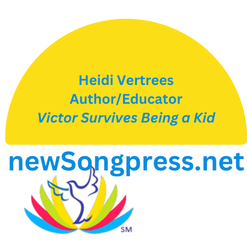 Two YouTube Videos CCBC Kids Sing have a fun song with motions for younger children. Armour of God (Ephesians 6:13-18) memory verse song https://youtu.be/Kgu6SpuN_FI?si=ny8U3dBI8JAhFA_T EquippedWithLove has a motivational video that can be good for teens. ARMOR OF GOD and Spiritual Warfare | MOTIVATION https://youtu.be/VQwP7kfQlKs?si=iJh2Ul1G5boHuTzi May you and the young people in your lives be blessed by suiting up with the Armor of God and standing firm in God’s strength, Heidi Vertrees Author/Educator newSongpress.net Copyright 2024, newSongpress (Permission is granted to make copies for teaching purposes.) Editor's Note: Would you like to see more posts to help you teach children and teens how to write, that include a Christian perspective? I invite you to sign up here. newSongpress.net
I also invite you to send comments to www.newsongpress.net/contact.html or on Facebook at Heidi Vertrees Author/Educator, as well as comment here. NewSong Press’s blog posts are designed to inspire parents and teachers with creative ways for children and teens to love writing and desire to share their Christian faith. This blog post focuses on the importance that children and teens delight in and rely on God’s profound love for them. With this rock-solid foundation they can write with a passion and dedication that goes beyond their pages. A specific creative-writing challenge is included in this post to help with this discovery and reflection. Also, see the P.S. for inspiring links for young people in your lives. As parents and/or educators, we strive to find meaningful ways for children to experience Gods’ love in profound and soul-touching ways. They can see His wondrous works in nature as they embrace the reassurance that God is our Creator of all good. As they learn the basis of our faith, they can come to understand God sent Jesus as our Savior and to help us know God’s love for all of us.  Jesus is God’s Gift to the World, to Help Us Know God’s Love. God is holy, perfect. We learn in our Christian faith that we need a Savior, Redeemer King Jesus, to be cleansed and worthy of an eternal relationship with God. But some of this can get fuzzy for children and teens, as well as some adults. So, how do we help our children and students grow in their faith and trust in the most precious gift—a new life with Jesus, and for eternity? How do they love being loved by God, so it shines through them daily and forever? Through a Mirror Dimly Apostle Paul writes “now we see in a mirror dimly, but then face to face…” 1 Corinthians 13:12. Or to paraphrase The Message, by Eugene H. Peterson, it’s as though we are looking into fog. But some day the sun will pierce through, and we will see God’s love for us clearly. In the meanwhile, we need to trust God, hang onto hope, and love with full hearts. To help us, the first and greatest commandment is to love God. That love includes trusting and seeking God and wanting to obey and follow Him. The second is to love others…all others…as we love ourselves. Frankly, even experiencing God’s love “in a fog” can be glorious. Young people can be encouraged to look for these God-moments each day. Then, when they know God’s love for them—they can learn daily what to do with this great and wondrous love. Those who love, have been loved and grow from it. When have our children and teens experienced God’s tender mercies in their lives? When have they gotten the reassurances that God loves them for who they are? When has this caused them to grow and thrive in their own compassion for themselves and others, with deep gratitude for our Holy and Almighty God? As parents and educators, how do we help them be attuned to this highly personal love from God so they can appreciate their blessings? And so they can write about their faith from a perspective of love? As some of you know, I lead a Good News Club. These Child Evangelism Fellowship Bible clubs for elementary age children are worldwide. In the United States, many, like ours, meet in public schools after the school day. During a club meeting, I sat by a dear, five-year-old girl while another volunteer reminded the children, God knows what’s in our hearts. The lesson was on David, who is known for being a man after God's own heart. (1 Samuel 13:14) Out of the sweet mouth of babe, this kindergartner leaned towards me and whispered, “Of course God knows my heart. Jesus lives in my heart.” How do we help our children and teens hang onto this assurance so it’s rock solid for them? Or shall we say, stone solid? Creative-Writing Challenge… Make a Timeline Students can make timelines of their lives and think back on each time they personally saw God’s love and mercy in their lives or in someone else’s life whom they know well. Celestial Bombardment In 1 Samuel 7:12 Samuel made a stone as a marker to remember that God was their stronghold and help when they defeated their enemies. He called the stone Ebenezer (Hebrew: eben = stone; ezer = help). So, Ebenezer means stone of help. In this case, God’s divine intervention to tip the battle was a celestial bombardment—lots of thunder! Perhaps you have heard the expression—"to raise one’s Ebenezer"? It’s intended to help us remember when we had difficulties and challenges and recall that God helped us through these hard times. That’s when we can “raise our Ebenezer” and remember God’s love and grace given to us. For this writing assignment, students mark an actual or approximate date on their timelines each time they remember God’s help, as well as label each event. Was it finding a beloved family pet that had run off? Or a near miss from a potentially serious car accident? Maybe even a less eventful time when they made a mistake, but in learning from their errors they also felt an enormous celestial hug from God. Hands-on “Touch Stones” To add to this assignment, you may want to find or buy some smooth stones and tell your children each time they pick up a stone they should think of a time God has been faithful to them. They can paint the stones and write important Bible verses or keywords or dates from their memories. In addition to creating the timeline, children may want to stack their stones and with your help, glue the stones together with a glue gun or liquid nails. Their timelines and stacks of stones can be personal reminders to them of how God has helped them throughout their lives. They can also serve to teach them they can count on God to continue to be there for them in the future. Here are two posts shared by Redeemer Bible Church in St. Petersburg, Florida, that can enrich your understanding. Keep Writing about God’s Tender Mercies To expand on this writing assignment, children can write a list of all the ways God has helped them this past year. Then they can write a list of goals or things they would like God to help them with over the next year or so. There may be particular memories children rekindle from this exercise that can lead them into writing a longer essay or story. You may want to teach your children about Samuel, who even as a boy was faithful to God. He grew to be a courageous leader, judge, and prophet, who loved God and obeyed him. God chose Samuel to anoint the first kings in Israel--Saul and David. When Samuel proclaimed the Ebenezer, he wanted people to remember God rescues when they humble themselves before God.  In addition to this, remember it was stones David used to overcome Goliath. Those stones were based on David’s strong faith in God, even as a teen. Children and teens can be empowered by their Ebenezer memory-stones to conquer personal evil “giants” that come their way, too. Knowing God has backed them in the past can give them courage to face opposition, as they trust in God for victories. In 1 Peter 2:4-5 We are also reminded, “As you come to him, THE LIVING STONE—rejected by humans but chosen by God and precious to him—you also, like living stones, are being built into a spiritual house to be a holy priesthood…” God’s love is so great for all of us. It’s the highest power there is. May you and your loved ones know it deeply through and through. And as pastor and author Philip De Courcy says on Know the Truth, a media ministry, “We need to constantly warm ourselves at God’s fire of love.” If we are following Jesus, the “Living Stone,” we are spirit-indwelt children of God and can warm ourselves with God’s love. May you and those you teach be blessed and know God’s love, Heidi Vertrees Author of Victor Survives Being a Kid newSongpress.net P. S. Click HERE for a song to bless you and your family, from Slugs & Bugs, (based on Psalm 139), “What is the Word?” which includes the African Children’s Choir. You may also want to read a kid-friendly version of Psalm 139 and focus on verses 13-14 on Psalmsforkids.com. We are wonderfully and marvelously made because God loves us. Editor's Note: Would you like to see more posts to help you teach children and teens how to write, that include a Christian perspective? I invite you to sign up here. newSongpress.net
I also invite you to send comments to www.newsongpress.net/contact.html or on Facebook at Heidi Vertrees Author/Educator, as well as comment here. by Nicolas C. Day Editor's Note--Nicolas C. Day is the author of Into the Great Marinara, which won a Christian Selah Award for middle grade fiction and young adult literature, as well as a Christian Indie Award. As one reviewer wrote--"...super fun and clever story..." I add, "Great Christian message." The links for story "formulas" are books the editor picked on these subjects; others are available as well. You’ve chosen to write Christian fantasy for kids, or you want to help kids and teens write Christian fantasy. Congratulations! You’ve embarked on a noble trail blazed by the footsteps of C. S. Lewis. Though more than worth it, you may find the journey is longer and more winding than expected. A map would help. So, here are five tips I’ve picked up along the way that will help keep you on the path, whether you’re writing or teaching youth about the craft of writing in this genre. TIP 1 Create a Story Arc Certain patterns of storytelling resonate with us. Call it a formula if you will. It’s the reason why some stories stand the test of time for hundreds or thousands of years and others fall by the wayside. Just because you’re writing Christian fiction doesn’t mean you should abandon the universal rules of storytelling. There are a few famous formulas out there– Hero’s Journey, Save the Cat, Three Act Structure, and so on. After you pick one, establish an external AND an internal story arc. The external arc is essentially the plot. This is what happens to the character. Following a proven formula helps structure and pace the plot in a way that keeps readers hooked. Not too fast, not too slow, but right in the Goldilocks sweet zone. While the external arc describes everything that happens to the character, the internal arc describes how the character changes because of those events. It answers a fundamental question: what about the character needed to change? Although we describe stories by the external arc (Hey, did you see that movie about so and so who went to the you know where and then that thing happened…?), it’s the internal arc that makes the story resonate. Putting on my faith hat, I’d say it’s because we’re all designed and hardwired to connect in this way. It’s certainly the way our Author chose to write our story. We were once one way, Christ intervened, now we’re different. See? External and internal arc combined for the win. TIP 2 The World is Your Canvas – Paint it but be Consistent with Your Color Scheme. The last tip was about novel writing. Now let’s focus specifically on the fantasy genre. One super cool feature of fantasy is that you have complete freedom to build a world. You can keep it as close to the real world as you like (low fantasy) or create a completely new realm altogether (high fantasy). The point is, you’re free to make up anything. Anything. So do so! Give us insight into the world you create – history, scenery, rules of physics, politics, whatever it may be. Let us know how your world is different. But remember to be consistent with the rules you created or else you’ll have glaring holes. If gravity is super light, don’t have one of your characters crashing down a hill, unless you can explain your exception (i.e., the character was wearing weighted boots). Be consistent. Unless your point is to be inconsistent. In which case… be consistently inconsistent! In my novel, Into the Great Marinara, my character enters a medieval world of talking pasta dressed in tunics and armor. Except one of my pasta characters wears a tuxedo with a bow tie and a top hat. This makes no sense. You know what else doesn’t make sense? Talking pasta. Which brings me to my next point… TIP 3 Embrace the Absurd Here’s where the fun comes in. Now we’re narrowing our focus from fantasy to youth fantasy. In no other genre is silliness so wildly accepted. The world’s being taken over by pizza eating toasters with fuzzy blue hats? You’re in the right place. Though by no means necessary or a requirement (there are plenty of non-absurd middle-grade fantasy stories), moments of absurdity can be terrific points in your story to communicate a meaningful message. I’m not sure why. Perhaps the uniqueness makes the lessons memorable. Take this excerpt from Lewis Carroll’s Alice in Wonderland-- “‘Would you tell me, please, which way I ought to go from here?' 'That depends a good deal on where you want to get to,' said the Cat. 'I don't much care where,’ said Alice. 'Then it doesn't matter which way you go,' said the Cat. '- so long as I get SOMEWHERE,' Alice added as an explanation. 'Oh, you're sure to do that,' said the Cat, 'if you only walk long enough.’” Alice is talking to a cat. That’s absurd point number one. Absurd point number two is the deliberate misunderstanding of the question by focusing on the literalness of the words. The exchange is light and fun to laugh at, but if you soak long enough, you can find meaningfulness as well. We’re all going somewhere in life, whether we’re trying or not. Maybe it would be a good idea to give some thought to where we’re actually trying to go, and whether our choices help us along that path. Young kids love absurd. I love absurd. If you’re writing youth fantasy, odds are you love absurd. So, dig in, but also look for ways to… TIP 4 Integrate Your Faith…But Remember, You’re Writing a Novel, NOT a Sermon. On our map we’ve traveled through novel world, fantasy country, youth fantasy county, and arrived at Christian youth-fantasy town. It’s time to integrate the themes of the Christian faith. But remember, novels and sermons are different genres. I don’t think I’m on shaky ground here. Jesus used different genres to teach his spiritual truths. Sometimes he spoke in sermons-- “Blessed are the poor in spirit, for theirs is the kingdom of heaven.” (Matthew 5:3) Other times, he spoke in parables--“A man was going down from Jerusalem to Jericho…” (Luke 10:30) You’re in parable land. If you forget this, you’ll usually end up with negative feedback that your story comes across as too “preachy.” People don’t want to turn to a story for a straight sermon. I’ll buck the trend here though. I’d rather err on the side of preachy than water down the message I felt called to write. But I do think there are other ways of effectively communicating the message. For instance, you can embed your faith in the dialogue of a character. Hey, maybe the character is a preacher. Then it’s not you sounding preachy, it’s the character. Or embed faith in the character’s internal story arc. My internal character arc of Into the Great Marinara is a faith journey. Tanner encounters pasta characters who believe the intricacies of their world can only be explained by the presence of a master Chef. Tanner’s journey leads him to the same conclusion. A third tactic--Deliver your message through allegory. This is a readily available option if you’re writing portal fantasy (in which your character is transported to an alternative world). While Chronicles of Narnia isn’t completely allegorical, C. S. Lewis definitely toes the line. Last, but not least… TIP 5 Ask, What’s Driving You to Write Christian Fiction? You can use the talents God has given you to craft an incredible story. You can even touch on themes inherent in the Christian faith such as those in J.R. Tolkien’s Lord of the Rings. For me, apologetics is the driver. It’s not the main theme of my writing. In fact, you may not even notice it’s in there. But I want to be sure that every story I write conveys the message that faith does not require a separation of the mind from the heart, so kids may stand in confidence when intellectual bullies come knocking. This is the motivation I needed to finish writing an entire novel and not just quit after a few chapters as I had done many times before. When writing Christian fiction, the basic tenets of the faith should be there. Fiction writing becomes a type of ministry. Every writer is unique. Every ministry is unique. Prayerfully consider where the two connect for you as a writer. Encourage the kids and teens whom you teach to pray about this too. BONUS TIP Use Age-appropriate Vocabulary I know I said five tips, but I’ll add one bonus tip since it was a valuable lesson for me. Make sure your vocabulary is best suited for the age of your readers. There’s software that can check the approximate reading level of your story and simplify the process for you. (Hemingwayapp.com is an easy one.) As Christians, may you “step into” gifts from God, be creative, and help others to do the same. To Him be the Glory!  About the Author Nicolas C. Day didn't always embrace the Christian faith, but once he did he took his faith to a big, next level and earned a Certificate in Christian Apologetics from the Talbot School of Theology at Biola University. Now he's passionate about helping his young readers know how to defend their Christian beliefs and stand firm in God's truths. He is a family man, has a B.S. degree in petroleum engineering, and enriches his stories with his gifts to create entertaining and inspiring Christian fantasy. You can reach Nicolas C. Day on the web, NicolasCDay.com and on FaceBook at Author Nicolas C. Day. His book, Into the Great Marinara, is available on Amazon and other major retailers. Editor's Note: Would you like to see more posts to help you teach children and teens how to write, that include a Christian perspective? I invite you to sign up here. newSongpress.net
I also invite you to send comments to newSongpress/contact.html or on Facebook at Heidi Vertrees Author/Educator, as well as comment here. June 21, 2023 By Annie Yorty Waiting has never been my strength, so you can probably imagine I’ve flunked the “waiting for God’s timing” assignment on several occasions. If you have ever been at the bottom of the class in this subject, read on to learn how God used teaching language arts to my daughter to show me His ways. I taught Alyssa, my daughter who has Down syndrome, to read in the summer after she turned five. Of course, it didn’t happen with just a wave of a magic wand, but my intense efforts paid off quickly. At the same time, we worked on readiness for writing. Fine motor tasks usually prove difficult for people with Down syndrome, so we focused on developing muscle strength as well as the cognitive components of writing. First grade came and went. Alyssa learned to create a spindly facsimile of letters. Second grade came and went. Alyssa demonstrated the ability to lightly trace the letters of her spelling words. She could dictate a story to me and would painstakingly trace what I wrote. Though she had many thoughts, she still could not produce a single written word from her mind. I redoubled my efforts in third grade. Every afternoon, we sat at the kitchen table to write sentences with spelling words. She would dictate the sentence she wanted to write. I would prompt her to sound out each letter and write the letter associated with that sound. I was willing to accept any spelling if she would only produce something. Alyssa passed the midpoint of third grade, and I lost hope she would ever write. We worked so diligently, yet she couldn’t get it. What was I doing wrong? Since then, I’ve learned we must strike a delicate balance between pushing our children and waiting for their readiness. This is God’s approach with His children as well. Sometimes He prods us to move ahead, while other times He waits and prepares us behind the scenes. Though I’m not a trained educator, I will share with you some helpful tips for teaching the reluctant writer, most of which I learned by doing many things wrong. You can read much more about my homeschooling journey with Alyssa in my book, From Ignorance to Bliss: God’s Heart Revealed through Down Syndrome. 5 Tips for Teaching the Reluctant Writer 1. Think outside the box. Since God knows every inch of territory both inside and outside the box, begin by asking Him for wisdom. Ask Him to help you sift through advice you receive from every side—friends, colleagues, Google, books, experts. As the parent, remember your expertise on your child trumps everyone else’s (except God). Ask questions, especially “Why not?” when your idea is dismissed as impossible. For example, phonics was the box that imprisoned Alyssa’s writing. After she succeeded, I finally understood she did not learn to read or write by sounding out words. 2. Persevere in what you know to do. Looking back, I see things I would have changed in my approach with Alyssa. Age and wisdom have taught me to lessen my focus on the goal and increase my sensitivity to my daughter. Nevertheless, God tells us to persevere in doing good. Alyssa’s inability to make firm letters told me she needed to continue both fine and gross motor strengthening activities. We tend to focus on the hands with writing, but the trunk and shoulder muscles must be strengthened as well. You might consider switching or beginning with cursive writing because it may be physically easier to write than block letters. Whenever a task is difficult, I advise breaking it down into smaller parts. This helps you to troubleshoot the problem and allows your child/ren to show their capabilities. For example, writing may be divided into different skills such as letter formation, copy work, content, spelling, and others. For a child who cannot put words on paper, offer the option of verbalizing the content. Write what she dictates and allow her to practice handwriting as a separate skill. Depending on the ability of your child, spelling may also be dictated. 3. Celebrate micro-successes. Often, our instruction emphasis leans toward weaknesses rather than strengths. Focusing on failures comes naturally, but it’s also a recipe for discouragement for the homeschool parent. Ask God to help you design instruction to promote small successes. Use the strategies I mentioned to divide tasks so at least one capitalizes on a strength. Use trial and error to find a balance between challenge and ease so your student can incrementally achieve. Create a visual reminder of successes along with verbal encouragement to your child. 4. Ask for help. God created us to live in community so we can support one another to live for Him. Seek help and advice within your community of homeschoolers. If you have access to a university hospital, you may be able to obtain an educational assessment to pinpoint specific issues and suggest useful strategies. One of my favorite online resources is SPED Homeschool (SPEDHomeschool.com). 5. Remember the academic outcome does not determine your worth. God loves you with an everlasting love that does not depend on your child’s achievement. He is with you and inspires your creativity to meet the needs of your reluctant writer. His grace covers our parental deficits as well as our children’s weaknesses. God’s Timing When God moves, He often bumps me out of the way. All I can do is stare, slack-jawed, at His work. After I poured years of blood, sweat, tears, and prayers into writing, Alyssa independently produced her first sentences in the privacy of her own bedroom. Belle from Beauty and the Beast was the subject of her first literary masterpiece. By God’s grace, Alyssa became a writer of much longer stories for His glory. She also spells well and writes in cursive. Near the end of From Ignorance to Bliss, you’ll find a chapter about Alyssa written in her own words. She would love to hear your thoughts after reading it. Here’s a sample: “I came out of the womb as a squalling and squirming bundle of joy one March morning in 1989. A nurse swaddled me and put a cap on my head. I was put on a bed with a pink blanket with stuffed animals surrounding me. I looked like a papoose with short brown hair, hazel eyes, tiny fingers, and skinny legs.” Be Assured Homeschool moms easily fall prey to discouragement because we invest our lives in a “project” that often will not pay off for years or even decades. “Let’s not become discouraged in doing good, for in due time we will reap, |
About the Author"Annie Yorty, award-winning author and speaker, encourages others to perceive God’s person, presence, provision, and purpose in the unexpected twists and turns of life. |
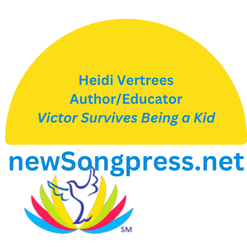
I invite you to connect with me at newSongpress/contact.html or Facebook.
We see trees...
--from the beginning of the Bible, in the Garden of Eden, where God created trees pleasing to see and with food to eat. Two special trees were the tree of life and the tree of the knowledge of good and evil. (Genesis 2:9)
The Psalms begin with a majestic reference to trees and how they can inspire us to live holy lives. (Psalm 1:3)
Early in the New Testament trees show us to spiritually produce good fruit. (Matthew 3:8-10)
The Bible ends with powerful declarations and reference to the Tree of Life. (Revelation 22:1-3 and Revelation 2:7)
Looking for a good book to help your children…
Trees in the Bible: Learn About Trees While Exploring God’s Word by Kimberley Payne teaches children (ages 7-12) about trees and having faith in the Creator God. Each chapter includes a Bible story from the viewpoint of the tree. This book integrates faith and science, with suggested projects.

When hiking in the woods, it’s such a thrill to look up high and see beautiful treetops against the sky…to treasure God and His majesty here on earth.
In CS Lewis’s Chronicles of Narnia, we read about trees dancing and defending God’s creation. Also, author JRR Tolkien made trees significant in Lord of the Rings. Both these famous Christian authors knew the importance of trees in God’s creation. It’s said they were keen on everyone protecting our environment, too. The Bible says we are to be wise stewards of the earth.
Both were devout, brilliant men. I am sure they intended important Biblical connections to their use of trees in their allegory stories. Chronicles of Narnia begins in a “wardrobe” made by a tree and it’s a tree that’s the first thing Lucy brushes up against when she enters the land of Narnia…just before she sees the lamp post in the snow…God’s light, right? And don’t we all want to enter a land that’s embraced by the Tree of Life?
(Isaiah 55:12 NIV)
I invite you to see these fascinating National Geographic and TEDx talks on YouTube to learn about this exciting scientific discovery and why we need to protect our forests. (Just tap titles to connect.)
1. How Trees Secretly Talk to Each Other in the Forest
2. Nature’s Internet: How Trees Talk to each other in a Healthy Forest
FUN WAYS TO LEARN THROUGH DISCOVERY
- It’s astounding to see how different tree leaves and needles are in shapes, shades, and sizes. The variety alone is such a testimony of God’s creativity! With your children, consider exploring trees in a nearby park or while hiking, and use Google Lens to identify the trees by their leaves. This can lead to other tree images online and links to continue their research and writing. (New to Google Lens? Look on your smart phone app store or see some YouTubes. It’s easy and free to install.) Your children may also want to use an Internet search engine, such as Google, to type in--Images of maple trees (or whatever trees they are studying).
- As another writing assignment, your children and teens may want to research trees and their healing properties. Willow tree bark has been used for pain treatment long before we had aspirin. In the Amazon jungles certain types of Pau D’Arco trees have been highly regarded for centuries for healing tumors, inflammation, pain, fever, and even viruses. And maple syrup? I thank Native Americans for long ago tapping into sugar maples and discovering this delicious treat that is packed with good minerals. God has also bestowed inflammation-reducing polyphenol antioxidants in pure maple syrup that can help strengthen our immune systems. So many of our medicines are derived from plants and trees, too.
- Another research topic for children to write about is how trees help flora and fauna around them. For instance, oak trees are homes to an amazing array of insects that birds depend on for food. In fact, the oak tree is home to more animals than any other European tree. All of us oxygen breathers depend on good, fresh air provided by trees. The YouTubes I mentioned are a great starting point for this topic. In The Magic and Mystery of Trees, by Jen Green, children can read how trees provide homes for mammals, birds, insects, and even fish. This comprehensive book has beautiful illustrations and is sure to captivate children as they discover more about trees.
(Psalm 104: 16-17)

- Consider reading fun facts about the African Baobab tree (https://www.edenproject.com/visit/things-to-do/rainforest-biome/baobab) and our Sequoias in California. (https://www.savetheredwoods.org/redwoods/giant-sequoias)
Both trees can live for 3,000 years! Perhaps your young writers want to write a “compare and contrast” about these two spectacular trees.
For the child who wants to write an adventure story
- Following a family read aloud of the classic, Swiss Family Robinson by Johann D. Wyss, your children may be excited to include trees in their writing. The Robinson’s treehouse was amazing and can stir young readers’ imaginations.
- Ah, another great research topic…treehouses throughout the world!
- The classic Winnie the Pooh, by A. A. Milne has charming tree homes for several of his characters, too. Young illustrators can have immense fun drawing creative tree homes to accompany their stories.
Dear readers, please consider how children in your lives can have enriching experiences with trees. They may love helping to plant small trees and watching them grow in your yards.
Have they swung on a rope to splash into a deep, beautiful lake, with the rope strapped to a sturdy tree branch? Maybe they have a fun place to read in the shade of a favorite tree. How about rocking in a hammock that’s tied between trees in your yard or when camping?
- As you shape an assignment that interests your children, I invite you to consider Bible verses such as Psalm 92:12-14. (NLT)
For they are transplanted to the LORD’s own house. They flourish in the courts of our God.
Even in old age, they will still produce fruit; they will remain vital and green.
For instance,
I will grow strong like the Cedars of Lebanon.
By following God, I will grow like trees that grow by God’s house,
I will continue to grow under His care, in His garden.
I will live a ripe, old age, like trees that continue to produce fruit.
May I produce fruit of the spirit. (See Galatians 5:22-23.)
May I remain vital, important, and ever-growing as I cling to my Lord…
My rock and my salvation.
Jeremiah 17:7-8 “…blessed is the one who trusts in the Lord…like a tree planted by the water…its leaves are always green.” (NIV)
Psalm 1:3 Those persons are “…like a tree planted by streams…whatever they do prospers.” (NIV)
The Tree of Life in Scripture often is mentioned as eternal life with Jesus. “I am the vine, you are the branches…” (John 15:5) A Bible study on this could start with Genesis 3:22-24 and Revelation 2:7. (Plus Genesis 2:9 & Revelation 22:1-3 mentioned earlier in this post.)
- Psalm 3:18, Psalm 52:8, Psalm 96:12-13, (and Psalm 1:3 mentioned earlier.)
- In Proverbs, the tree of life is linked to wisdom. Proverbs 3:18 Wisdom “is a tree of life…” Proverbs 15:4 “The tongue that brings healing is a tree of life.”
- Matthew 7:15-20 (and again, Matthew 3:8-10)
- 1 Peter 2:24 “He himself bore our sins in His body on the tree, so that we might die to sins and live for righteousness; by His wounds you have been healed.” (NIV)
Developmentally speaking, children can easily memorize Bible verses, poems, and songs. By learning these treasures "by heart," they can draw on them all their lives.
(Psalm 119:105 KJV)
When I was young, I read Joyce Kilmer’s poem, “Trees” and frankly, assumed it was written by a woman. Not so! Mr. Kilmer lived from 1886-1919 and was tragically killed in WW1. His beautiful legacy, “Trees” is in the public domain, and as I close this post, I share it with you.
By Joyce Kilmer
I think that I shall never see
A poem lovely as a tree.
A tree whose hungry mouth is prest
Against the earth’s sweet flowing breast;
A tree that looks at God all day,
And lifts her leafy arms to pray;
A tree that may in summer wear
A nest of robins in her hair;
Upon whose bosom snow has lain;
Who intimately lives with rain.
Poems are made by fools like me,
But only God can make a tree.

Blessings to you,
Heidi Vertrees
Author/Educator
Victor Survives Being a Kid!
newSongpress.net
With Palm Sunday and Holy Week/Easter soon approaching, let’s use as our guide, Howie’s Broken Hee-Haw, written by multi-award-winning author, Josie Siler.
A variety of story frameworks lend to beautiful stories. In this one--
7 Tips to GET ROLLING…
2. Next, make the animal’s problem loud and clear… in this case, a “broken” hee-haw! When Howie tries to hee-haw, like all the other good donkey-folk do, his only comes out Hee-haw-hee-ha-la-la-lay-lu-yaaa. Can you see where this is going? And don’t young readers love to make animal sounds!
Okay, so he has a problem. Now what?
3. Show how the problem is making life hard for the character. Show how the main character feels about all this. You want your readers to connect on some levels and care about your character and the problem. Help your readers identify with some of the frustrations and make connections with troubles in their own lives.
4. This is a good time for the young writer to restate the big problem/challenge. Show the struggle with trying to do right (hee-haw “correctly”) and not knowing what to do.
5. Usually, this character needs to have a hand (or hoof) in fixing the problem, usually a big hand, but when writing with a Christian perspective we know the even Bigger Hand, and yes! Jesus helps Howie with his “problem” along with Howie. Stay tuned to read how.
Young Christian writers can strive to show this God-given grace in their stories, too.
6. Now is a great time for the character to share the problem with someone trustworthy. Howie laments while his mom listens and tries to reassure him. Young writers should pick a wise soul appropriate for their story. Here is a nice place for the character to feel better…but the problem still lurks.
7. By the way, with animal stories, it can be charming to include other animals in the illustrations and story. Sometimes Howie is seen with a cute chick and chicken.
2 Tips for the BIG CHANGE OF SCENE…
Show that the main character is on a MISSION.
2. They are brought to Jesus. The coming-to-Jesus scene here is especially precious because Jesus tells Howie, He needs Howie’s help. The readers’ own souls can awaken here. How does Jesus need their help?
And they can super relate when Howie responds that he is not worthy. Even Moses was worried about speech problems when God summoned him to go forth! Don’t we all have our issues of feeling inadequate? But with God…
2 Tips for the BIG AH-HAH MOMENT…
2. Make the BIG AH-HAH MOMENT fill your readers with joy. The message to the readers is that we are each created just the way God intended and God has special plans for each and every one of us.
I am excited for your young writers to see what Ah-Hah moments they create with their stories.
Please encourage them to pray to God about this.
Howie is “only human” and is still afraid that others will laugh at him. Jesus is about to ride on Howie as He enters Jerusalem and cheered on by a great crowd of palm branch wavers. But Howie finally understands that he was made to praise Jesus.
AREN’T WE ALL!
2 tips for the EXCITING, SATISFYING ENDING…
1. Writers should show how their character has solved (or learned to live with) the big problem and be better for it…brave and courageous, wiser, or whatever character traits they are aiming to present.
2. The problem resolution should be great for the character and very satisfying for the readers. There should be special sparkles at this moment that also encourage the readers for challenges in their lives.
2 tips for A GREAT TAKE-AWAY…
Howie learned--He was intentionally created, and for a purpose.
Readers should appreciate this about themselves, too.
2. As in this story, young writers can add a special prayer at the close of their stories, for their readers to pray for their own lives. Words such as …I want to be wise and use the special talents You have given me…
May you all have a great and lovely journey helping children and teens write fiction stories, with a Christian perspective!
INVITATION TO SHARE
for the title featured in this post.
Josie Siler’s award-winning children’s picture book (for ages 2-7),
Howie’s Broken Hee-Haw
is a superb Easter-time book! Plus, it makes a sweet touchstone book for discussions with older youth.
It is available at End Game Press, Christian Books, Amazon, Barnes & Noble, and other retailers.

Heidi Vertrees
Author/Educator
Victor Survives Being a Kid
newSongpress.net
For this post, I have interviewed a multi-award-winning author, who writes with a focus on animals. Here’s what she shares about helping children and teens write—with a Christian perspective and to include animals in their writing. The tips here will be for nonfiction. An upcoming post will address advice for fiction writing with animals.
Denise Lee Branco, author of Rabbit at the Sliding Door: Chloe’s Story and Horse at the Corner Post: Our Divine Journey, writes true animal stories to honor these marvelous creatures. She says,
"Every animal comes into our lives for a reason."
- How have these animals enriched their owners’ lives?
- What lessons have they learned from these special animals?
- What are the milestones in their taking care of these animals that helped them learn loyalty, responsibility, caring, and joy?
- In what special, endearing, or funny ways do their animals communicate to them?
- How well do they observe their animals, so they can understand them better?
Before young writers take pen to hand, Ms. Branco suggests handling a pet’s favorite toy, collar, or looking at photos, such as pictures from the adoption day, to remember special scenes to then write about.
It helps to have a theme. Ms. Branco is an ardent animal advocate.
Her theme is the...
Ms. Branco encourages young writers to develop each scene based on the writer’s theme.
Her goal is to help others grow in respect and appreciation for God’s wonderful animals.
So, one of her key writing strategies is to…
- Show interesting details about her pet, and then
- Show how she felt in reaction to what her pet has done.
This is a good strategy for young writers to intentionally use, too.
For instance, if a child has been in the hospital, how did the child feel and what did the child do when finally arriving home and being greeted by a family pet?
Facts also can help readers appreciate these stories better, by getting an overall view. Young writers may want to use an Internet search engine to gather statistics about their animals of topic and include some important facts in their writing. Your local SPCA, BestFriends.org, and Rabbit.org may be a good place to start, says Ms. Branco.
She also encourages young writers to write a “Gratitude Letter” to their beloved pet. It is good practice for children to learn to write what they appreciate or love about an animal and to explain why.
Young writers can find ways to also express their thankfulness to God for His creation and how their special animals enrich their lives.
Many churches have a special service each year for the blessing of one’s pets, both big and small. Children may be fascinated to attend such a service in your area, and then write about this experience. In early October, in honor of Saint Francis, (patron saint of animals), Christian churches worldwide bless animals and have special prayers for creation.
If your young writers would like to share their writings about animals that includes a Christian viewpoint, I invite you to send them to me by July 1st. I am sure it would be fun for us to see some of these in an upcoming post. You are invited to send these via the contact page on newSongpress.net. We look forward to seeing these stories!
Her books make beautiful gift books for teens and young and older adults!
I invite you to click here to go to www.newSongpress.net and sign up on the home page for my periodic newsletters.
May you all have a great and lovely journey in helping children and teens with nonfiction animal writing, with a Christian perspective,
Heidi Vertrees
Author/Educator
Victor Survives Being a Kid!
newSongpress.net
Archives
November 2023
September 2023
June 2023
May 2023
March 2023
February 2023
December 2022
November 2022
August 2022
July 2022
June 2022
March 2022
February 2022
January 2022
December 2021
Categories
All Christian Writing Prompts Christian Writing Prompt That Helps Kids See God's Love For Them Christian Writing Workshops Songwriting Prompts Students Writing With Strong Voice Teaching Reluctant Writers Writing-with-strong-voice





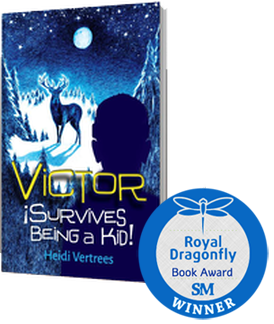

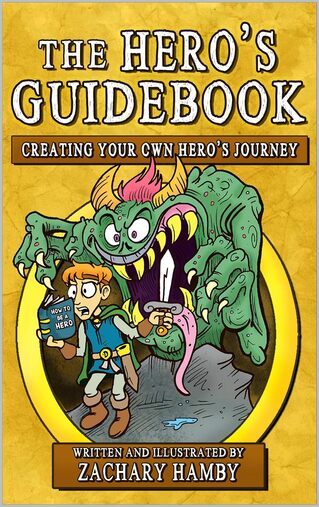
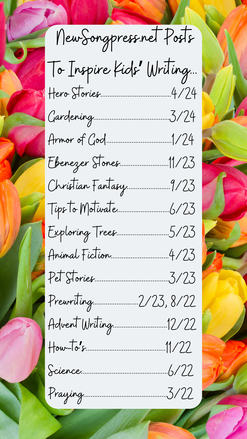
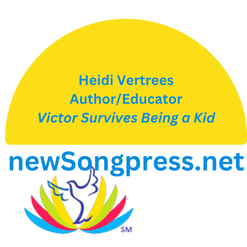




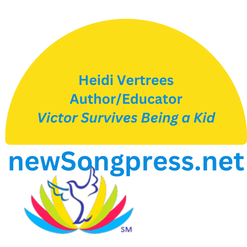

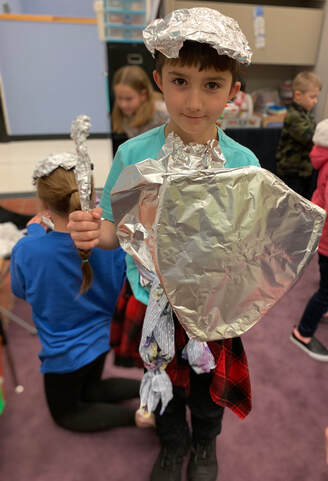



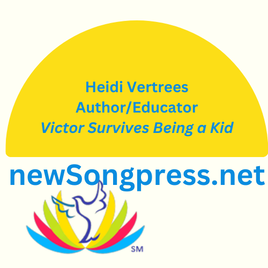

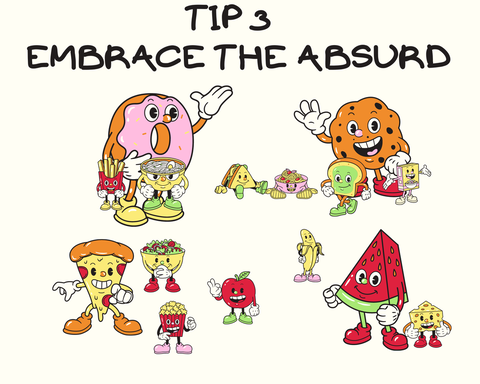

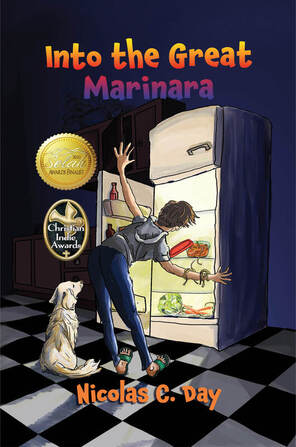
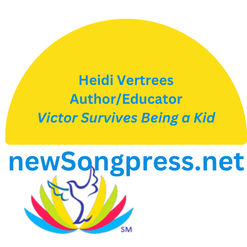



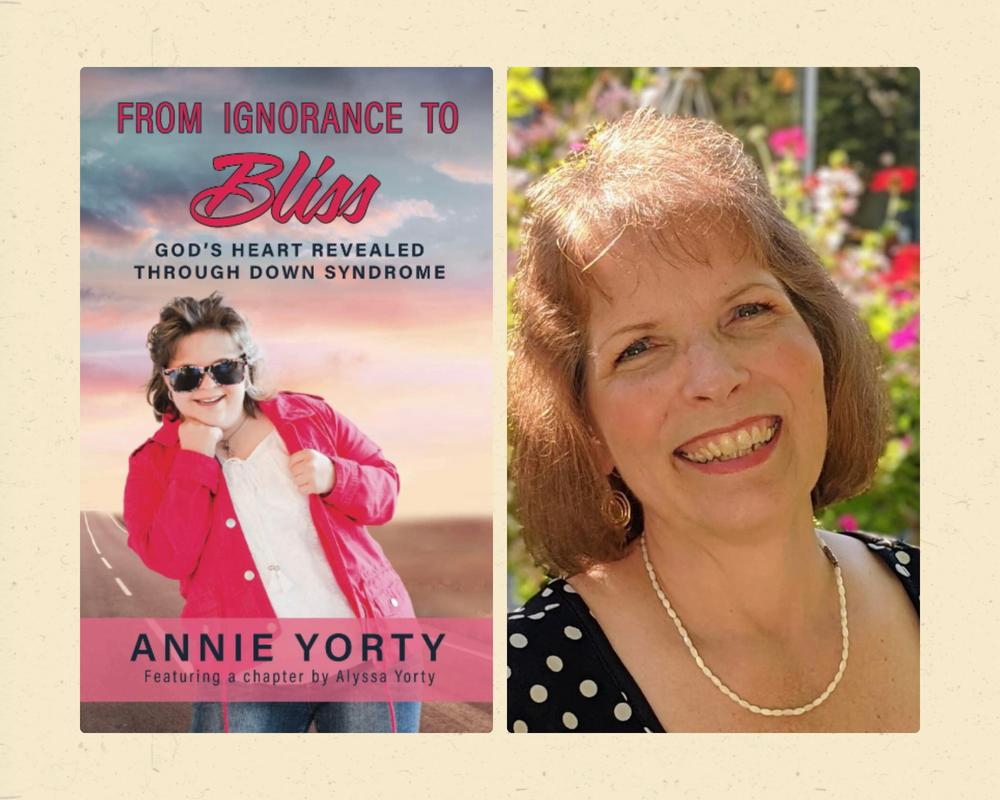

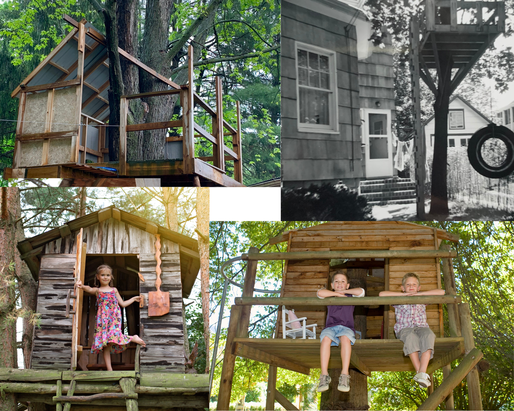



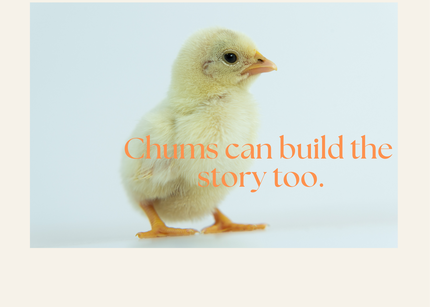

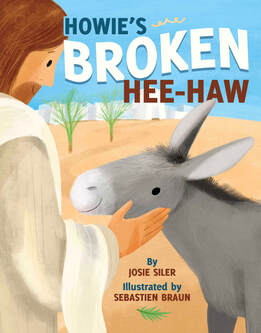





 RSS Feed
RSS Feed